There are three ownership levels at Frankfurt Bridges
Upon completion, the land, buildings and vehicles on the Frankfurt Bridges are in the possession of a non-profit Operating Company Ltd. This company operates the properties, green and open spaces as well as the traffic system of the Frankfurt Bridges for around 85 years until it is dissolved ca. 100 years after planning began, and its possesssion is transferred to the actual owners: the investors of the “Investor Fund for the Construction of the Bridges”.
The bridge body, however, including its pipeline infrastructure, will be sold to the city of Frankfurt immediately after completion. The streets on which the bridge piers stand remain the property of the respective owners (city, state or federal government). The city pays a special usage fee for bridge sections that are not on its own streets, but on those of the state or federal government. The bridges’ operating company, however - and its successor after ca. 85 years: the investor fund - pay the city a bridge property tax (for the use of the body) plus a usage surcharge (for the use of the streets).
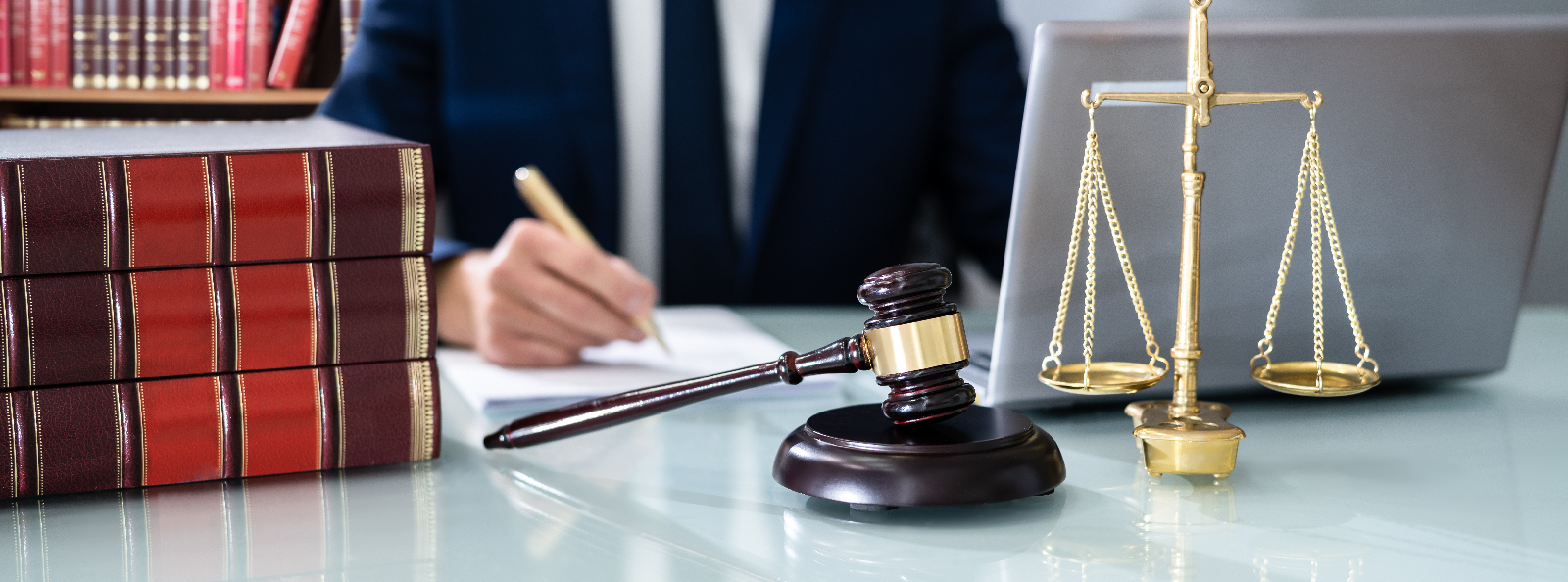
Privately owned living areas above streets do not yet exist as a standard solution – accordingly, there are no regular ownership structures for them
The Frankfurt Bridges are being built over roads that are partly owned by the German federal government, partly by the state of Hesse, and partly by the city of Frankfurt. As soon as they are built, the bridge body, including all pipes and cables running through it as well as its underground infrastructure (cisterns and geothermal probes), will be sold to the city of Frankfurt - because only the city has the expertise and resources to ensure the supply of a housing district for over 30,000 people and, above all, manage functioning interfaces to the existing urban supply infrastructure. Moreover, walking paths, roadways and "public places" (playgrounds, yoga meadows, therapy gardens, etc.) also remain the property of the city.
The land/ground on the bridges and all bridge-buildings, as well as the vehicles and their control infrastructure are to be transferred to the property of the actual owners, the investors, 100 years after the official start of the project. Until this change of ownership, however, they will only fulfill social tasks - social, cultural or scientific - and will not generate any profit in the traditional sense: all income from real estate, the bridge traffic system or various types of entrance fees etc. will be completely reinvested in bridge life - either to maintain affordable price levels for all rents and other offers, or to finance the maintenance and further development of the district on the bridges.
During this period, the Frankfurt Bridges will be managed and operated by a Bridge Operating Company, which is planned to have the legal form of a gGmbH (non-profit Ltd). This operating company will therefore only pay a small bridge property tax from its income to the bridge body owner , namely the city of Frankfurt, including a usage surcharge for the usage of the streets below them. The city uses this to pay a special usage fee to the respective road owners (state or federal government) if the bridge pillars of the body are on roads that do not belong to the city itself (approx. 50% of the Frankfurt Bridges are founded on federal roads and approx. 20% on roads that belong to the state of Hesse).
As soon as the buildings and land on the bridges as well as the transport system become the property of the bridge investors 100 years after the official start of the project, they must pay the bridge property tax including the usage surcharge for streets to the city of Frankfurt. In addition, there is a usage fee to the city of Frankfurt (similar to a toll) for the traffic system, which the owners also receive after ca. 15 years of bridge building and ca. 85 years of operation, since the traffic routes are also located on the bridge body.
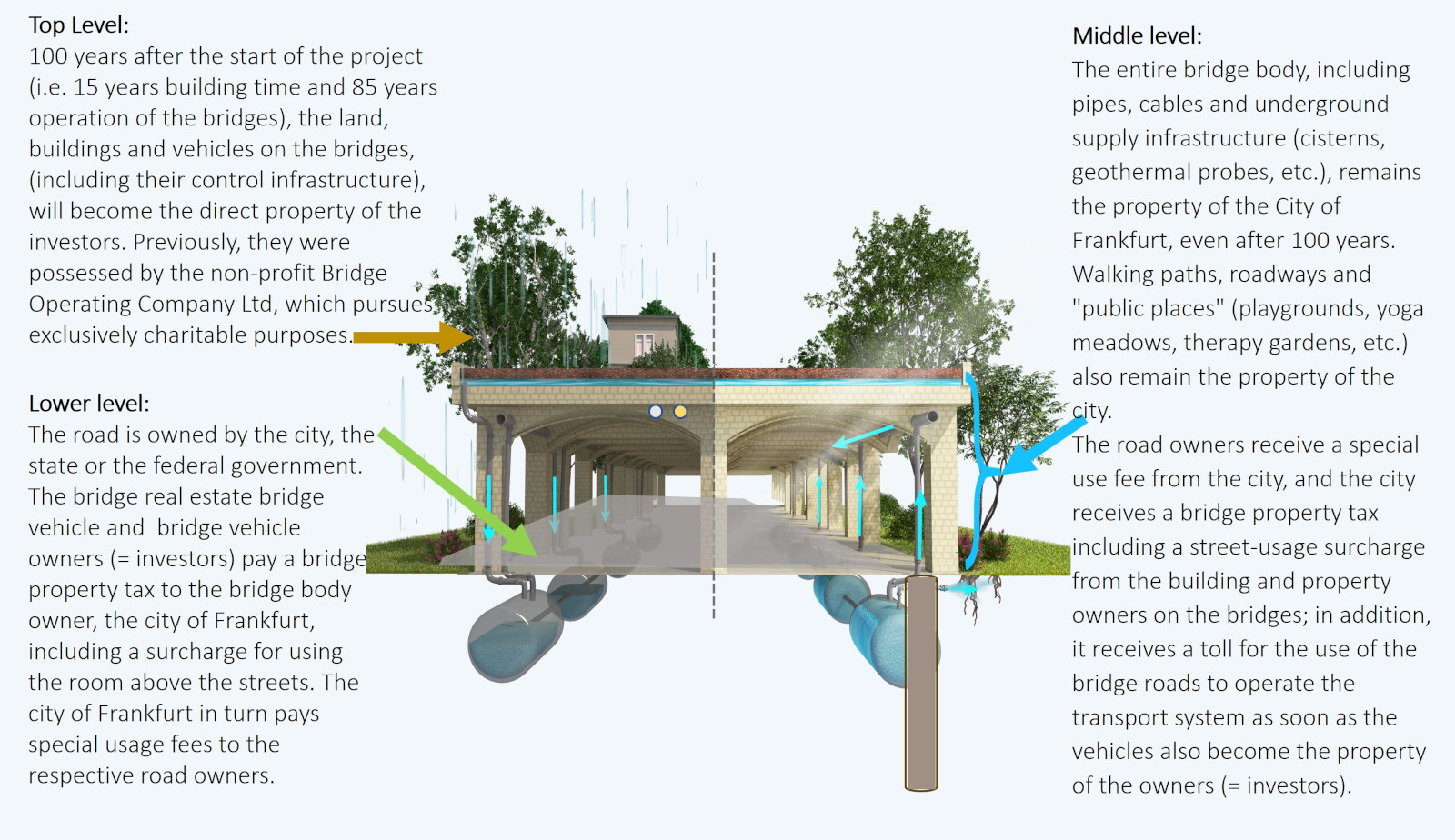
There are three “ownership levels”: the investors, the city of Frankfurt and the respective road owners (federal, state or city)
Owned by the non-profit operating company, the Frankfurt bridges serve exclusively social purposes: affordable housing, urban energy transition, irrigation of green spaces, sustainable transport, research, etc.
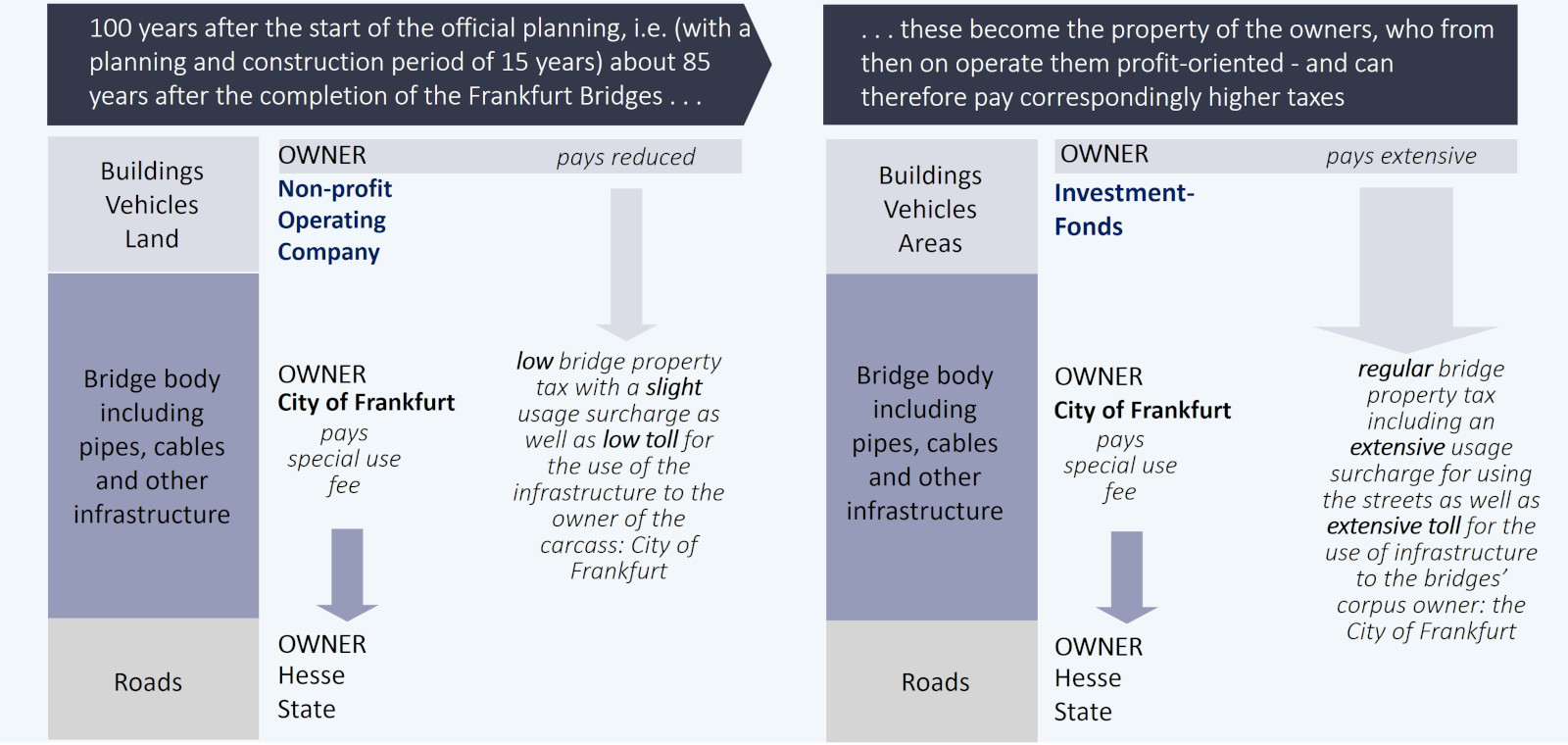
Only after 85 years of non-profit operation do the buildings, vehicles and land on the bridges fall to their actual owners: the investors
The owners of the Frankfurt Bridges use both: (directly) the bridge body and (indirectly) the streets on which the bridge body with supporting columns stands
The bridge body, including all pipes, cables and bridge-roads as well as its accesses ( stairs and elevators ) will be sold to the city of Frankfurt after completion or will otherwise become its property (see financing concept). The infrastructure that will be laid under the road surface (which will have to be renewed anyway during the construction of the bridge) such as cisterns and geothermal probe fields. will also become the property of the city . The city must make separate agreements with the respective road owners (if it is not the city itself but the state or federal government) regarding use and construction burden in the respective road space. This is already the case in Germany, when supply lines are under federal roads or their accesses (gullies, shaft accesses, etc.) are on federal or state roads. The city can follow this conventional practice when it comes to the interface with the other road owners and the birdge body.
The owners of the buildings, vehicles, land and other open spaces on the Frankfurt bridges are the investors , even if the entire use (i.e possesssion) of the Frankfurt Bridges in the first 100 years from the start of planning is exclusively available to society or the public interest (for research and science, nature and environmental protection, social facilities and affordable housing, art and culture as well as education, etc.).
The property on the Frankfurt Bridges needs the bridge body as a basis, on the one hand as a constructional basis, and on the other hand as a supply basis due to the city's supply lines and infrastructure, which are located in the bridge body or under it. For the use of the bridge body, the owners (i.e. initially the Operating Company Ltd for about 85 years and then the investors) pay a bridge property tax including a usage surcharge - even if the buildings are not built on someone else's land, but the properties themselves are founded doubly on someone else's "land" (the city's bridge body + the respective road owner).
However, such a legal construction results in double taxes being incurred, so to speak, simply because the properties "float" on a higher level: one to the bridge body owner, the city of Frankfurt, and one to the road owners on whose land the bridge body stands. This can be solved by the city first concluding a contract with the Operating Company Ltd. and, after 85 years, with the investors, in which they pay not only the bridge property tax but also a usage fee directly to the city, which in turn then pays the road owners. In this way, there is no longer a contractual relationship between bridge property owners and road owners.
Real estate and vehicles will be transferred to private owners about 85 years after the bridges are completed – but bridge-roads and bridge-sidewalks will remain the property of the city so that the bridges remain open to the public
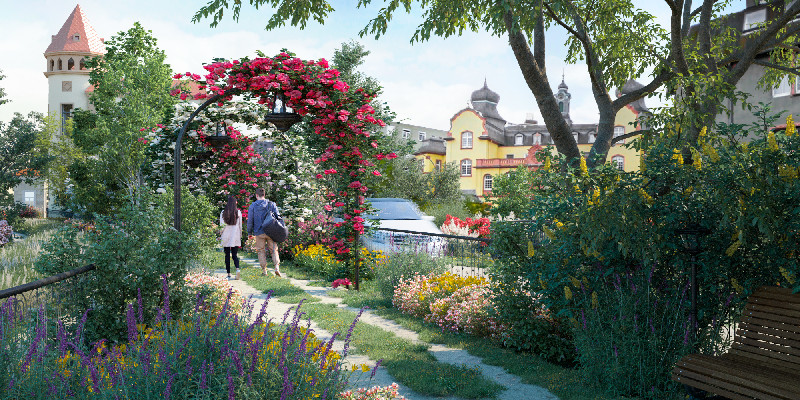
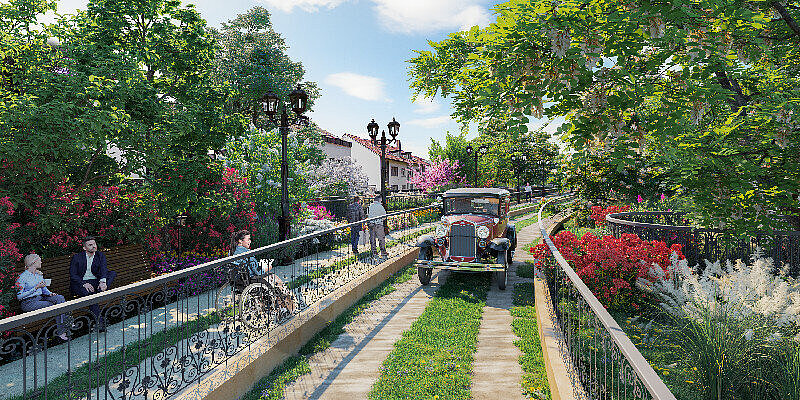
100 years after planning began, much of it is transferred to the owners for private commercial use – but it is not necessarily completely lost to society
While the "surface" of the bridges remains the property of the operating company or later the property of the investors, the sidewalks and driveways on the bridges are sold to the city immediately after completion, along with the bridge body. They will remain the property of the city even after 100 years, especially since many of the supply lines in the bridge body are laid mainly under the bridge-sidewalks to make them easier to reach for maintenance etc., and important drainage channels run along the middle of the driveways to collect water, etc. In addition, the bridges should remain accessible to the general public, even if the properties on them become the property of private owners (i.e. the investment fund) 100 years after planning begins and are then optimized for private use and are therefore no longer available for public welfare purposes.
However, many park areas (especially special green spaces such as therapy gardens or inclusive playgrounds) should remain accessible to the public even if they become the property of private owners. This can be regulated by agreements on opening times with the private owners so that they are available to citizens for large parts of the week. Alternatively, public accessibility could be maintained by the city renting special areas and spaces to make them available to the public.
The "museum vehicle fleet" on the bridges will also become the property of the private owners 100 years after planning began. However, they will also be contractually obliged to continue operating the trains for the public on some of the routes. This should be based on models that are also used by private railways, for example.
Even if the charitable character of the bridges disappears 100 years after planning began and they become a valuable private real estate landscape, their benefit to society can still be maintained in some areas. In addition, the city remains free to gradually buy properties on the bridges from the owners (i.e. the investment fund) over the course of the 100 years (or approximately 85 years after the bridges are completed), which can then continue to be used purely for charitable purposes.